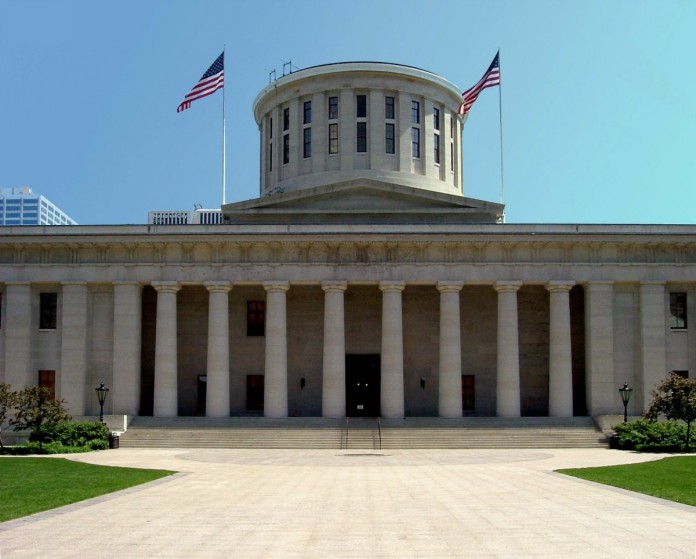COLUMBUS — The Ohio Farm Bureau Federation has proposed two changes to the Ohio Department of Taxation aimed at more accurately reflecting farm property valuations, as well as encouraging more conservation practices.
The suggested changes to the state’s Current Agricultural Use Value, or CAUV, formula were forwarded to Ohio Tax Commissioner Joe Testa’s office May 13.
The CAUV was established in 1975 as a means of taxing farmland on its agricultural use value and not its full market value. In recent years, due to higher crop prices and lowered interest rates, some Ohio farm owners have faced as much as 200-300 percent increases in CAUV rates.
Cap rate change
The first of the OFBF’s latest suggested CAUV formula changes focuses on the capitalization rate, a formula used widely in the Real Estate industry to determine and quantify the rate of a return on investment.
The current method to determine the capitalization rate, OFBF Director of Agricultural Law, Leah Curtis, explained, is known as the Akerson method.
When determining factors such as debt, equity and rate of interest, the Akerson method considers a property’s “holding period” and “equity buildup” — market factors that do not affect the agricultural-use value of the property, Curtis said.
“How long a time you have held a property, or whether it is paid off, does not affect your ability to use it,” she said.
The current formula also assumes land is held for only five years, when in reality farmland is typically held for decades and often across multiple generations, the OFBF noted in a press release announcing the new proposal.
For that reason, the OFBF suggests a Simple Band of Interest method of determining the CAUV capitalization rate, which does not include such market influences as a holding period or equity buildup.
Breaks for conservation
The second part of the OFBF proposal asks that all lands in federal conservation programs, or other lands managed under year-round conservation practices, be valued at the lowest possible rate.
Currently, farmers are discouraged from idling land because it is taxed as though it was producing crops, the Farm Bureau press release stated, noting that “taxing conservation lands at the CAUV minimum value is appropriate because conservation lands are non producing.”
The proposal also supports farmers who take steps to protect the environment and water quality, the release stated.
“We don’t want to discourage people from enrolling in those programs,” Curtis said, noting that landowners not in federal conservation programs who have conservation areas such as grass waterways or riparian buffers on less than 25 percent of the CAUV area would also be eligible for the lowered rate.
“These efforts are important for conservation and water quality.”
The OFBF is also asking the tax department to take additional steps to further reflect the lower value of woodlands compared to crop ground.
Timeline
The changes to the CAUV formula were proposed in a letter to the Ohio Department of Taxation and can be taken administratively without the need for new legislation. Curtis said the OFBF expects the discussion to continue at the next schedule Agricultural Advisory Committee meeting May 28, but said the Farm Bureau welcomes any discussion prior to that meeting.
Likewise, the tax department is already expected to put into practice changes to the CAUV formula suggested by OFBF at a March 5 tax department Agricultural Advisory Committee meeting — including improving the timeliness of the release of annual crop price and crop yield tax values.
“These were all things the tax commissioner could decide to do (without formal legislation) so it has not been written into the rules,” Curtis said. “But the department has indicated they will be putting them into practice with 2015 CAUV values.”
Related stories:
- Will Ohio have CAUV changes by 2016? Nov. 19, 2014
- Ohio CAUV tax rates: What goes up, must go up some more, Oct. 22, 2014
- Ohio Farm Bureau tackles CAUV concerns, Oct. 22, 2014
- Ashtabula meeting to discuss rising CAUV rates, Aug. 6, 2014
- Farmers see 2008 CAUV rates increase, Feb. 11, 2009











I believe OFFB means “Band of Investment” method not “Band of Interest”. CAUV landowners have been told a changeover to the Band of Investment method should raise the Capitalization rate about 3% and if so that would lower CAUV about about 33% off your tax bill for any given year. In my case our acreage has been owned by me for 23 years and could be passed on for another 50 years to my sons and grandchildren so I agree with OFBF there. These are the kind of roots in the same dirt farmers have.
There is another justification too for raising the capitalization rate by 3% because the average Retail and Manufacturing Capitalization Rate is about 3% higher than current CAUV cap rate. We don’t understand how ODT can discriminate against farmers year after year after year. Statewide just this change is estimated at about $70,000,000 in over taxation for 2015. We want this money returned.
.